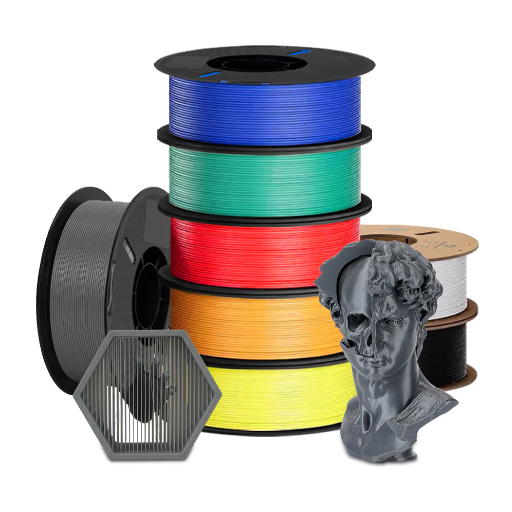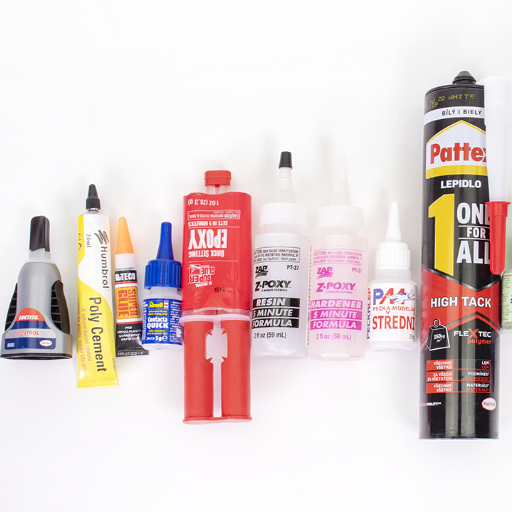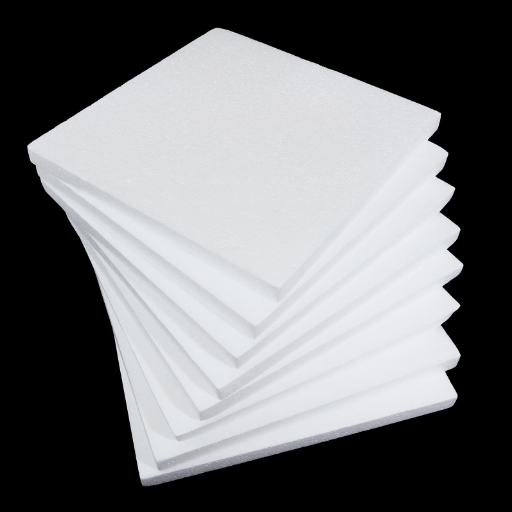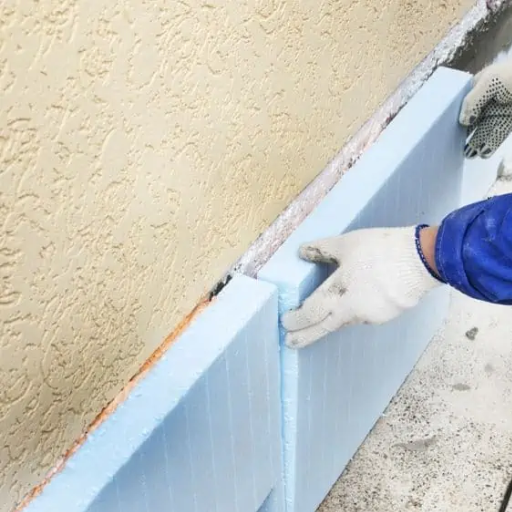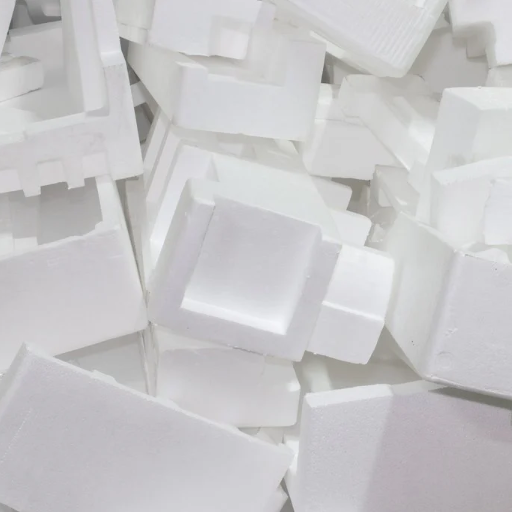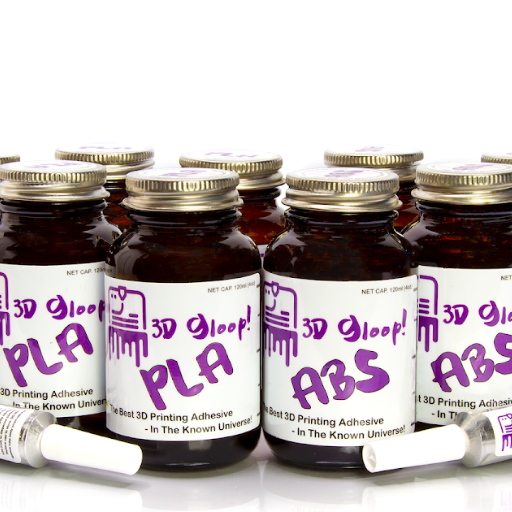Picking the right adhesive could mean the difference between success and failure when tackling DIY projects. In the adhesive world, Loctite Super Glue and Gorilla Glue are a household name because of their strength and reliability. But, each product has its advantages, potential limitations, and unique properties which need to be evaluated before choosing. In this blog post, we will dive into details and provide a comprehensive comparison of Loctite Super Glue and Gorilla Glue, weighing important factors such as material compatibility, bonding strength, curing time, and overall versatility. You will get a great understanding of which adhesive is more effective for your DIY projects after reading this blog post.
What are the Key Differences Between Loctite Super Glue and Gorilla Glue?

Material Compatibility
Loctite Super Glue is recommended for use on metals, ceramics, and plastics which are smooth and nonporous, as it bonds swiftly. In addition, it works beautifully for lightweight materials as well as finishing clear. But foam, wood, and fabric absorbent materials perform better with Gorilla Glue because of its expansive features that help in filling gaps needed by these irregular surfaces during curing for a stronger grip.
Bonding Strength
Applying Loctite Super Glue creates a bond that is exceptionally rigid and strong, which is perfect for use when something must be placed with exactness. Unlike this, Gorilla glue is perfect for heavy-duty undertakings because of its superior strength. It creates a robust bond, sometimes flexible, which can withstand immense stress in different environmental conditions.
Curing Time
For quick repairs, Loctite Super Glue is appropriate as it can effectively bond items in only a few seconds to minutes. However, for gorilla glue, curing time can extend to 24 hours but results in superior bonding strength and a gap-filling ability.
Adaptability
While both glue types are versatile, Gorilla Glue edges out awarded on adaptability because it works on wider ranges of materials such as outdoor regions and areas with high moisture. On the other hand, Loctite Super Glue works beautifully in crafting and other fine details where precision and cleanliness is paramount.
By cognizing these differences, you are in a position to choose the adhesive that meets the needs of your particular project.
How Does Each Glue Work on Different Materials?
Loctite Super Glue excels in creating strong, fast-drying bonds on non-porous materials such as metal, ceramic, glass, and plastic. Its cyanoacrylate formulation ensures rapid adhesion, often setting in seconds. This makes it ideal for precision work where immediate bonding is required. However, it performs less effectively on porous surfaces like wood or foam due to its limited penetration into these materials.
Gorilla Glue, on the other hand, is a polyurethane-based adhesive known for its versatility and ability to bond with a wide range of materials, including wood, metal, stone, glass, and ceramics. Its expanding foam-like property fills gaps and creates a durable bond, making it suitable for porous or uneven surfaces. While Gorilla Glue takes longer to cure compared to Loctite, it provides a robust bond for heavy-duty applications, particularly where structural strength is needed. This adhesive is also water-resistant, adding an advantage for outdoor or more demanding conditions.
Ultimately, the choice between the two depends on the materials involved and the specific requirements of the project.
Which Adhesive Offers a Stronger Bond?
The choice of the strongest adhesive bond differs for every application. The cyanoacrylate glue produced by Loctite works great for tasks with precision and initial adhesion strength is always high. However, it works well with smooth non-porous surfaces such as plastics, metals, and rubber rather than anything else. Polyurethane adhesives such as Gorilla Glue outperform Loctite due to their expanding properties that fill gaps in porous or uneven surfaces. With the added structural strength, these adhesives are much more superior. User experiences and comparative studies point to Gorilla Glue performing better than Loctite in durability and resistance during heavy-duty work under stress and moisture. Whereas, Loctite offers better performance for quick and precise tasks.
Is Loctite Super Glue Better for Plastic?
Loctite Super Glue’s adhesive qualities work exceptionally well on many plastics making it suitable for gluing plastic materials together. It is based on cyanoacrylate which gives it a strong, rapid bond and works well on smooth, non-porous surfaces such as ABS, PVC, and polycarbonate. However, some plastics like polyethylene (PE) and polypropylene (PP) are known to be adhesive resistant. For these specific materials, Loctite makes specialized formulations such as the Loctite Super Glue Plastics Bonding System, which works with a primer that conditions the surface to enhance bonding.
What makes Loctite more preferred than other brands is its simplicity in application, fast setting time, and minimum requirement of plastic surface for it to work, unlike other brands, Loctite can work in controlled environments. On the other hand, for extensive repairs or when gap-filling is necessary, Loctite must be replaced with better alternatives, for example, epoxy or polyurethane adhesives. Nevertheless, Loctite Super Glue remains first among preferred brands for any domestic or DIY projects involving basic plastics because of its simplicity and efficiency.
How Do You Use Super Glue Effectively?

To use super glue effectively, follow these steps:
- Prepare the Surfaces – Ensure the surfaces being bonded are clean, dry, and free of grease or dust. For plastics, lightly sanding the surface can improve adhesion.
- Apply the Glue Sparingly – Dispense a small amount of glue onto one surface. Super glue works best with a thin layer as it relies on surface contact for strong bonding.
- Join the Surfaces Quickly – Align the pieces carefully and press them firmly together. Keep steady pressure for at least 30 seconds to ensure initial adhesion.
- Allow Full Cure Time – While super glue sets quickly, full bond strength may take 24 hours. Avoid putting stress on the joint during this period.
- Safety Precautions – Use in a well-ventilated area, avoid skin contact, and store the glue properly to prevent drying out.
By adhering to these guidelines, superglue can achieve maximum effectiveness and durability for a wide range of applications.
What is the Proper Way to Apply the Glue?
To properly apply super glue, begin by preparing the surfaces to ensure they are clean, dry, and free from contaminants like dust or grease. For certain materials, such as plastics, lightly roughening the surface with sandpaper may enhance adhesion. Once prepared, apply a small, even layer of glue to one of the surfaces. Super glue is most effective when used sparingly, as it requires close-fitting surfaces to form a strong bond. After application, quickly align and press the surfaces together firmly, maintaining steady pressure for about 30 seconds or as indicated by the product instructions. Allow the glue to cure fully, which may take up to 24 hours for maximum bond strength, even if the initial set occurs within seconds. Following these steps will ensure an optimal and long-lasting bond.
How Long Does It Take for Each Glue to Dry?
Superglue has various drying times that depend on the formulation type, material, and environmental factors. Generally, the initial bond for most standard superglues is between 10-30 seconds, but gel-based or high-strength superglues require more time. The full bond strength is reached in 12 to 24 hours. Drying time can also be affected by environmental factors such as humidity and temperature which can heighten or lower the drying time. As a preliminary step, it is always best to consult the specific product instructions provided by the manufacturer.
Do You Need a Clamp for a Stronger Hold?
While a clamp is not always necessary for a superglue bond, it can strengthen it in certain situations. Super glue can be set without a clamp for smooth and even non-porous surfaces like metal or glass. When bonding uneven, porous, or flexible materials, employing a clamp ensures that the pieces remain aligned and in constant contact while the glue cures. Clamping can also help reduce gaps in the bond which softens and weakens the adhesive, leading to a more favorable bond in the end. Always, However, some glues recommend clamping for proper adjustment, so remember to always check the guidelines.
What are the Advantages of Gel Super Glue Versus Liquid Super Glue?

Both liquid superglue and gel superglue have their distinct advantages which differ according to the application needs. Super Gel Glue is ideal for vertical surfaces or applications that need a higher level of precision since it does not drip. This makes it much easier to control. Its morphed form also makes gel glue better for porous and rough surfaces since it also fills gaps thereby making the bond stronger. On the other hand, Liquid Super Glue pours quicker than Gel, so it penetrates cracks easier and is better for smooth and non-porous surfaces. Lastly, the gel and liquid choice ultimately comes down to the specific materials and the nature of the project.
When Should You Use Gel Superglue?
Gel Superglue should be used for applications requiring precision and control, especially on vertical or inclined surfaces where liquid adhesives may drip. It is ideal for bonding porous or rough materials, such as wood, fabric, or ceramics, as it fills gaps effectively, creating a stronger bond. Additionally, the thicker viscosity of gel superglue makes it suitable for projects requiring minimal spreading or risk of overflow. For heavy-duty repairs or projects involving uneven surfaces, gel superglue provides better adhesion stability compared to its liquid counterpart.
Does Gel Formula Offer Better Control?
Indeed, in comparison to their liquid counterparts, gel formulas provide significantly better control because of their thicker consistency. The gel superglue’s non-drip quality makes it ideal for precise applications, especially on vertical or overhead surfaces because it does not run. This improved control means there is less chance of mess or excess glue spreading where it is not needed. In addition, gel superglue allows for more accurate placement on delicate or intricate projects that need precision. Its slower curing time allows for more precise adjustments to be made during application, which is why it is preferred for complex tasks or assemblies.
How Does Gorilla Super Glue Compare to Other Glue Products?

Gorilla Super Glue distinguishes itself from other adhesive solutions with its strength, versatility, and user-friendly application. Its formula is impact-resistant will ensure its durable bond will not fail against heavy use. Unlike typical adhesives, Gorilla Super Glue bonds quickly without compromising bond strength and works well on various substances like wood, metal, ceramic, and plastic, among others. Moreover, its form as gel and liquid makes it easier to apply on hard-to-reach or precise areas. Because of that, Gorilla Super Glue is very dependable for both routine repairs and complex tasks.
Is Gorilla Super Glue Good for Porous Materials?
When compared to non-porous surfaces, porous materials show moderate performance when exposed to Gorilla Super Glue. The glue’s formula is made of cyanoacrylate which is intended to soak into little pores to make a strong bond. However, with bulky porous surfaces such as untreated wood, fabric, or plaster, the glue’s absorption will limit its bonding capabilities. The above surfaces will see better results when paired with Gorilla Super Glue Gel as its thicker formula does not allow for over-absorption and provides a stronger bond. For best results, remember to clean and dry the surfaces before applying glue.
How Does It Perform on Polyethylene and Polypropylene?
Polyethylene (PE) and Polypropylene (PP) possess low-energy surfaces that are considered challenging to bond using adhesives such as Gorilla Super Glue. This is due to the cyanoacrylate-based formula lacking certain components needed to bond strongly to these plastics. To bond PE and PP effectively, an adhesive or special primer specifically designed for these surfaces must be used. Gorilla has a Plastic Bonding System which includes a primer, so it can be used as a plastic glue, with the base concentrating on such surfaces. The performance without primer on polyethylene and polypropylene will be generally poor and weak. Always follow the manufacturer’s guidelines for optimal results.
What Makes Gorilla Glue Expand?
Gorilla Glue expands due to its reaction with moisture in the air. It’s a polyurethane-based adhesive, and when it’s exposed to water, the glue goes through a curing process involving foaming expansion. Carbon dioxide gas is produced from the reaction which leads to the glue expanding and filling gaps in porous surfaces. This property also explains why it strongly bonds with different materials. However, it also means that care needs to be taken when applying the adhesive to avoid excessive expansion, which can distort the reformed surfaces. Gaps and other voids will be filled, but there needs to be careful control of the distortion. Do note that properly adjusting the materials to be bonded while curing will permit control over movement which leads to a tightly secured bond.
Which Glue is the Best Choice for Your DIY Project?

When choosing the best glue for your DIY project, it is essential to consider the materials you are working with and the demands of the application. For porous materials like wood or foam, Gorilla Glue’s expanding properties create an exceptionally strong, gap-filling bond. If precision and no expansion are required, such as when working with paper, plastics, or ceramics, cyanoacrylate (super glue) is often a better choice due to its quick drying and clean application. For heavy-duty applications or projects involving metals and glass, epoxy adhesives provide superior strength and durability. Always refer to the manufacturer’s guidelines to match the glue’s capabilities with your project’s specific needs.
When to Prefer the Gorilla Glue?
Gorilla Glue is the number one choice for wood, foam, concrete, or other materials as it creates a strong bond that expands and fills gaps. It is best in conditions requiring great strength and moisture or extreme temperature resistance, such as in outdoor furniture and other repairs. It also works exceptionally well in joining two different materials together which makes it perfect for more complicated projects where one glue must do it all. That said, its spongy nature must be taken with caution, as too much glue will ruin the entire project.
When to Use the Loctite Super Glue?
Loctite Super Glue works best when a strong and fast-bonding adhesive is needed on multiple materials. It works best for fixing small items and plastic, metal, rubber, ceramic, wood, leather, and even paper surfaces. It works best for the fast pacing situations, such as repairing delicate household items, crafts, or any proficient restorations. It is most effective for quick fixes and urgent projects due to its fast-curing formula. Do not use on flexible surfaces or materials such as polyethylene and polypropylene void of particular adhesion promoters. Always ensure surfaces are clean, dry, and well-prepared to achieve the best results.
How Do You Choose the Right Adhesive?
Choosing the right glue entails many important considerations to achieve maximum effectiveness. First off, assess the components that are to be joined, as certain glues only work best with particular substrates like metals, plastics, or wood. Next, examine the surrounding conditions of the bond which will include temperature, humidity, and exposure to chemicals or sunlight since these factors will determine the strength and longevity of the glue. Lastly, think about the kind of load or force that the bond will be subjected to – tensile, shear, or peel forces may all demand varying characteristics from an adhesive.
Also, determine whether the bond is required to be permanent or temporary, as some glues allow repositioning while else provide a strong, irreversible hold. Methods of application and curing also need to be considered in conjunction with the project. For instance, hot melt adhesives may be very effective when speed is essential in bulk applications, however, epoxy-type adhesives require more mixing and time to set. Rest assured knowing that after examining these factors, along with the technical details, you are most optimally prepared to select an adhesive that works best for your project or operation.
References
Frequently Asked Questions (FAQ)
Q: What are the main differences between Loctite Super Glue and Gorilla Glue?
A: The primary differences between Loctite Super Glue and Gorilla Glue are their composition and application. Loctite Super Glue, a cyanoacrylate glue, is best for quick bonding and works on a variety of materials like ceramics, metal, and rubber. Gorilla Glue, on the other hand, is a polyurethane glue known for its strong bond and ability to work on uneven surfaces, including wood, stone, and foam.
Q: Does Loctite Super Glue work well on clear surfaces?
A: Yes, Loctite Super Glue dries clear, making it suitable for clear surfaces where the visibility of the glue line is a concern. It’s a good glue option for projects requiring a clear finish.
Q: How does the drying time of Gorilla Glue compare to Loctite Super Glue?
A: Loctite Super Glue has a quick drying time and typically sets within seconds to a minute, reaching full cure in 24 hours. Gorilla Glue has a longer drying time, taking about 1-2 hours to set and requiring up to 24 hours for a full cure.
Q: Is Gorilla Glue suitable for bonding hard plastics like PE and PP?
A: Gorilla Glue is an all-purpose glue, but it may not bond well with hard plastics like PE and PP without additional surface preparation. Loctite offers specific formulations that may work better on such materials.
Q: Can Loctite superglue be used on uneven surfaces?
A: While Loctite Super Glue can bond uneven surfaces to some extent, Gorilla Glue is often preferred for such tasks due to its expanding nature, which fills gaps and provides a strong bond on uneven surfaces.
Q: What is the difference between Gorilla Glue and Gorilla Super Glue Gel?
A: Gorilla Glue is a polyurethane-based adhesive that expands as it cures, making it ideal for larger projects. Gorilla Super Glue Gel, a cyanoacrylate super glue, provides a gel consistency that is thicker and less runny, making it easier to control and suitable for precision work.
Q: Can Loctite Super Glue be used for acrylic bonding?
A: Yes, Loctite Super Glue can bond acrylic surfaces effectively. For best results, ensure the surfaces are clean and dry before applying the glue.
Q: How should the nozzle be maintained after using Loctite Super Glue?
A: After using Loctite Super Glue, clean the nozzle to prevent clogging by wiping away any excess glue. Seal the cap tightly to preserve the remaining product for future use.
Q: Which glue is better for projects requiring a strong bond on square-inch surfaces?
A: Gorilla Glue is often preferred for projects requiring a strong bond over a wide surface area, such as square-inch surfaces, due to its expansive and strong bonding properties. However, for smaller areas or where quick setting is required, Loctite Super Glue is a good glue option.
















